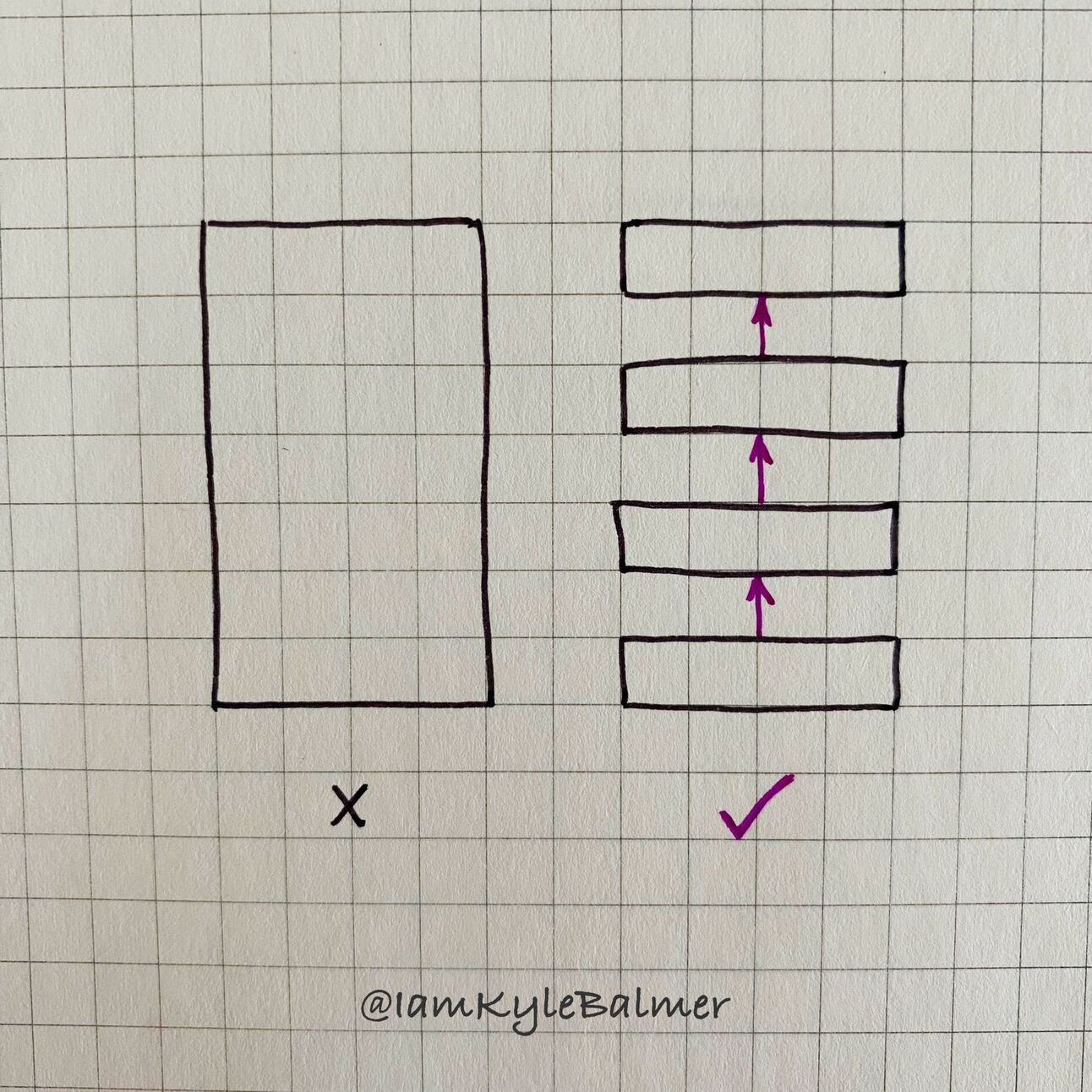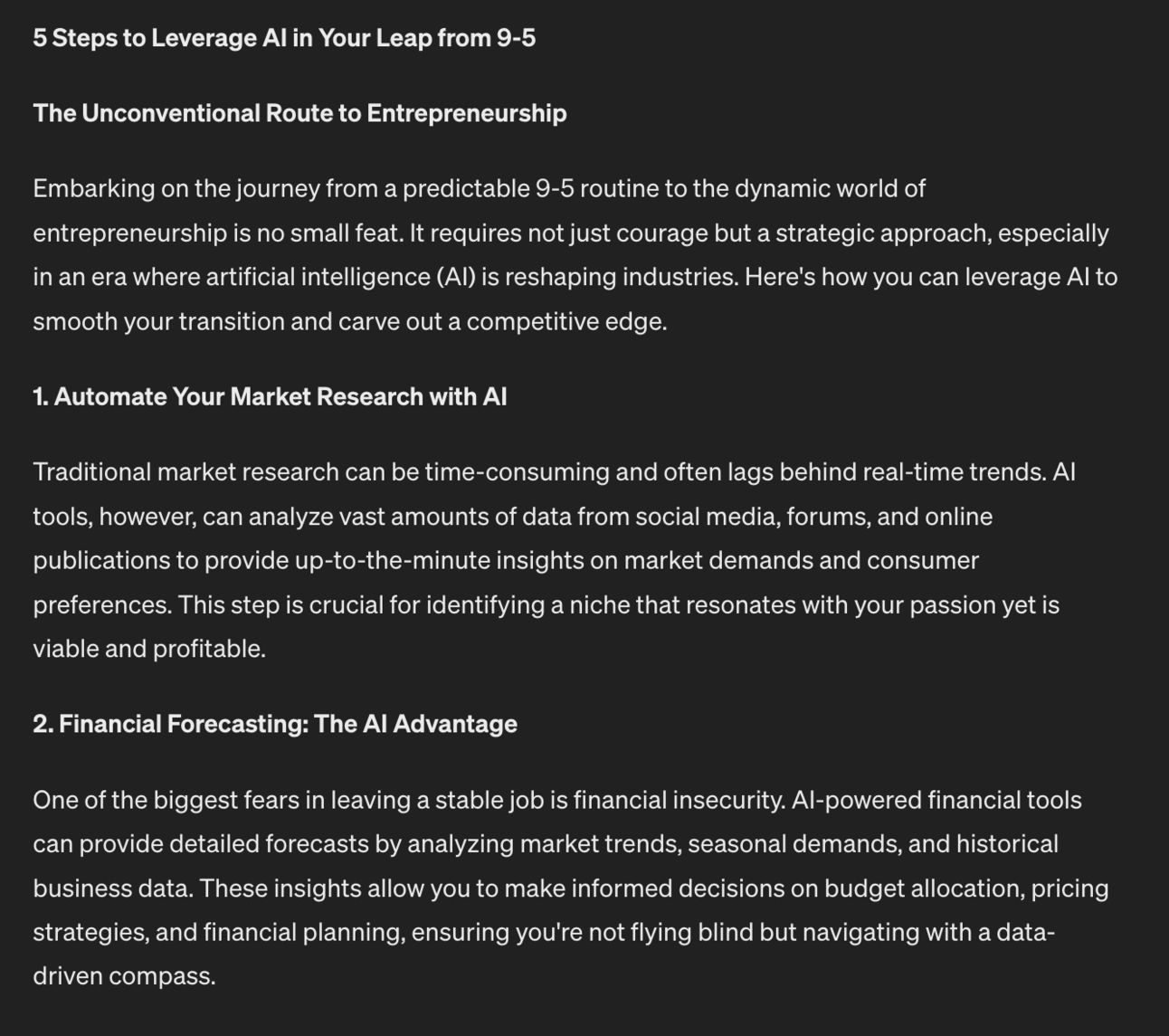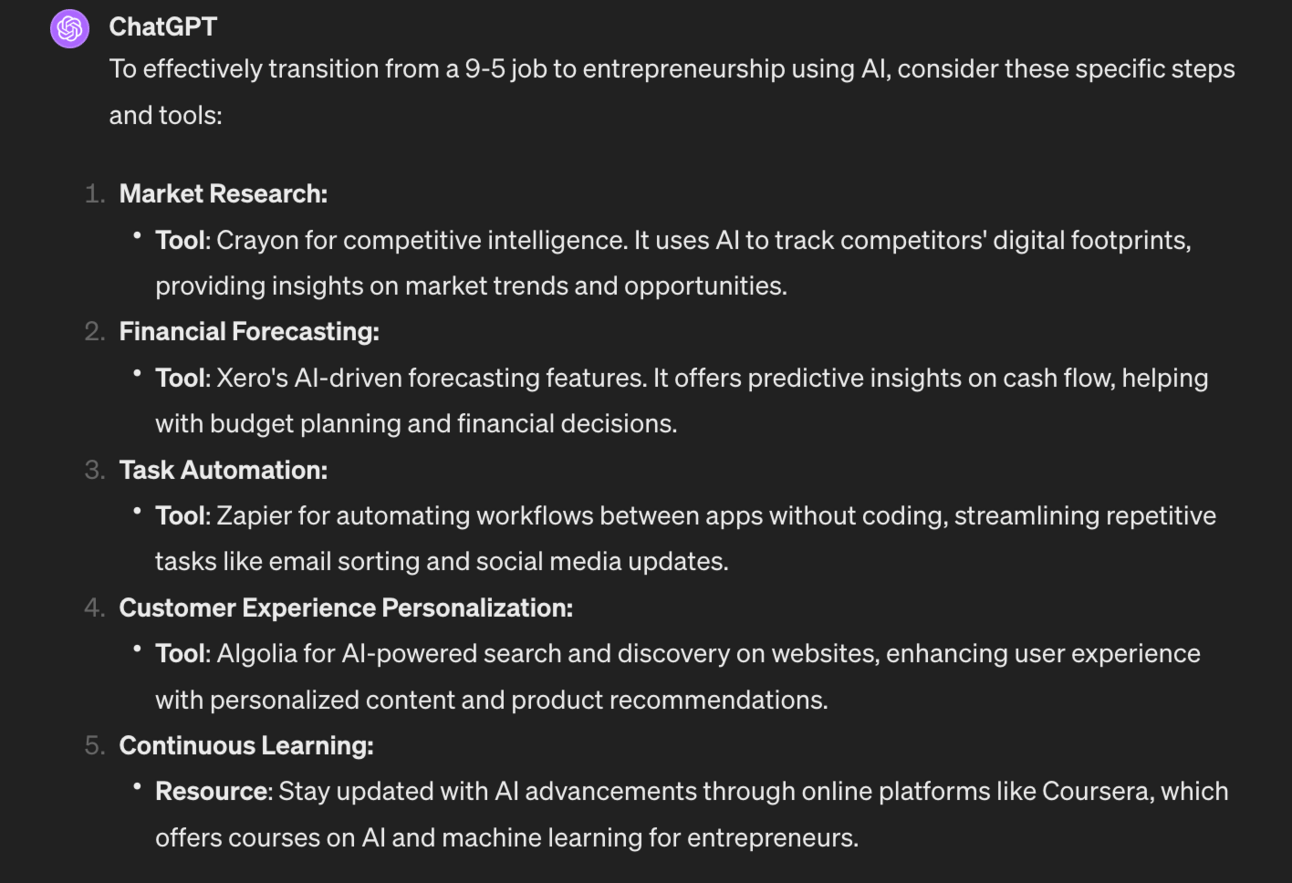Part 2 - First go long
In this Part we’ll look at generating the foundation of our content machine - the long-form piece.
Not a writer?
Don’t worry - I’m going to show you how to create non-crappy, non-generic writing using AI.
You know how it’s often easier to criticise than it is to create?
We’re going to harness that!
Using a technique called revision prompting.
First up we want to produce a long-form piece of content.
Long-form is basically a blog article, newsletter or short essay. Generally 750+ words.
The reason for this is that we can cascade from long-form to medium and short form easily. We cannot go the other way.
We start with lots of information and break it up into smaller pieces. Large to small. Entropy, baby.
AI is fantastic at the breakdown process of creating lots of smaller content pieces from a large content piece. It’s a powerful use of AI.
This is the linchpin on which this content system is built. And it is why AI is so powerful in content creation.
However, there’s a catch.
ChatGPT’s Limitations

ChatGPT is not good at generating content from scratch.
There, I said it. Sorry AI bros, shoot me.
The content it produces tends to be very generic, very uninspiring and honestly not very enjoyable to read.
Lots of other people will recommend using AI to create newsletters and blog articles.
I do not.
No matter how complex the prompt the results will be uninspiring and inauthentic.
Instead we need to put in human work here at the top of the funnel.
We add our human touch here in the long-form content piece and then allow AI to help with breaking it up into shorter form content (in the rest of this Playbook).
We still save a lot of time and energy. But we will need to put some work in here at the beginning of the process.
Still valuable
Am I going to ask you to write from scratch? If you can - do so.
The higher the quality of the input the higher the quality of the various outputs further down the chain.
But here’s a technique you can embed in your workflow whether you are going to be writing or not.
It’s called revision prompting.
Here’s a prompt to get started:
Topic = []
Content type = []
Title = []
My audience is [audience details]
Prepare a 1000 word blog article.
Do not be generic, include non-obvious and controversial takes
Include a strong hook first sentenceInput the topic, content type and title from the context matrix in the previous Part.
In this example I use:

This creates a solid blog article. Here’s the beginning:

This blog article is perfectly serviceable but not particularly interesting.
What I recommend doing is using this as a jumping off point.
Have you ever noticed how criticising and editing other people’s work is a lot easier than doing so with your own work?
We can use this fact to our benefit.
Go through the output that ChatGPT has given you and criticise it!
Feed the criticism into ChatGPT.
An example - the generated article above is saying that AI is useful for identifying market trends. The point is fine but not very specific.
So I can feed in a criticism like:
Give specific examples and tools. Do not make general sweeping statements.That forces specificity:

Much better. I’d then tell ChatGPT to add these into the main article. You can do this conversationally with a prompt like “these look good. Add them naturally into the 1000 word blog article”
Revision PromptingContinue to do this as many times as required.
Read the article, provide a criticism or suggestion, review the revision and ask ChatGPT to combine the revision with the article. Repeat.
Why don’t we build all of these revisions into the original prompt? Why are you being lazy Kyle?
Some people will teach you to add ALL of these specifications into the original prompt. You end up with a 2000 word mega prompt.
Sometimes this works. But in my experience it’ll still produce something generic. It’s genericness built into the mega prompt!
The only way to truly get the output that you as a content creator need is for you to provide revisions. You know what you want and can tell ChatGPT.
Remember that once you have this one high quality long form content piece we’re going to be able to covert it into many many more using AI. It remains a low time commitment considering the value we’ll get.
So use this method of generating a first draft and then providing corrections to get the article to a place where you are happy with it.
Premium Prompt - Top Revision Suggestions
I’m going to give you a list of my top revision prompts.
Try them out and see which lead to higher quality articles. Remember this is subjective to you - so test a bunch and keep a note of the ones you rate the most.
Here are some of my most used:
Simplify
Add a personal story
Quote an expert
Add specific steps
Add historical example
Find stats
Use less floral language
Less robotic sounding
Show both sides
Break this up more
Cut jargon
Add humour
Add a list
Use A vs. B comparison
Ask questions
Add a real world example
Give me 5x beginning hook examples to choose from
End with a CTATest these out as you get used to revision prompting. You’ll get an idea of what works best for you over time.
Pulling it together
Now that we have a high quality long form piece we’re going to start to break it down into other content pieces over the remaining Parts.
Here’s a reminder of the week:
- Part 1: Never ending story
- Part 2: First go long
- Part 3: Break it down
- Part 4: Video overlay
- Part 5: Getting arty